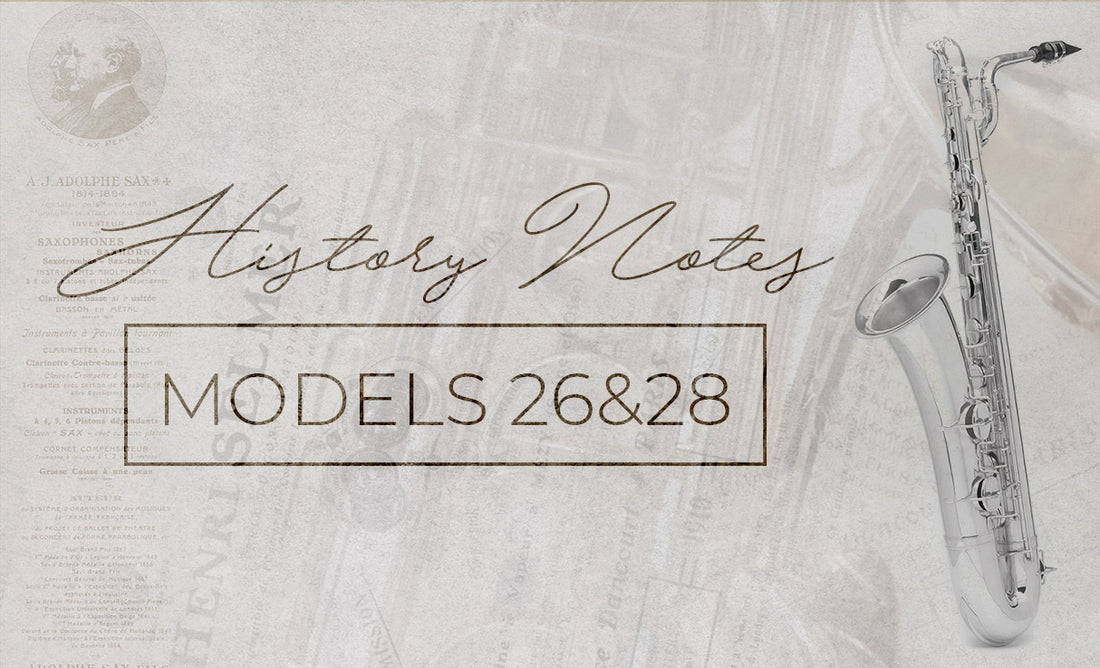History Notes #02 : Models 26 and 28

Model 26
In the spring of nineteen twenty six, SELMER had made enough small adjustments and improvements to the instrument to validate a new model. So accordingly they replaced the Model 22 with the Model 26. It was much the same instrument with some key improvements and some other minor adjustments.

Production by this time had increased to about fifteen hundred instruments per year. They were ramping up quite nicely. So the model twenty six started around serial number four thousand four hundred (a little later for the C Melody, around four thousand eight hundred) and ran up to about eight thousand.
Throughout the model twenty six run, the most popular instrument was still the alto. The soprano was next most popular. But interestingly, the C tenor or C melody had declined a little bit in popularity and the B flat tenor became the most popular instrument.
Model 28
Next in line was the model twenty eight. The Model twenty eight was only stamped on the Alto's.
There are two types of model 28. For the first half, the model twenty eight were simply a model twenty six with a new number stamped on them. For the second half of the model twenty eight, it was a radical redesign. They increased the size of the bore, they improved the key positions, and they increased the number of keys.

Henri SELMER Paris was not yet putting lacquer on the instruments, so most of the instruments were silver plated in one form or another. There were a number of opportunities. You could have a flat silver plate, a sable silver plate, you could have gold plate, and they also had a nickel plate. Some instruments were also sold in bare brass, but that was a very small number. The vast majority of instruments were silver plated.
► Subscribe to our youtube channel so you don't miss any episode
►Next episode: Large Bore
► Discover History Notes as a podcast